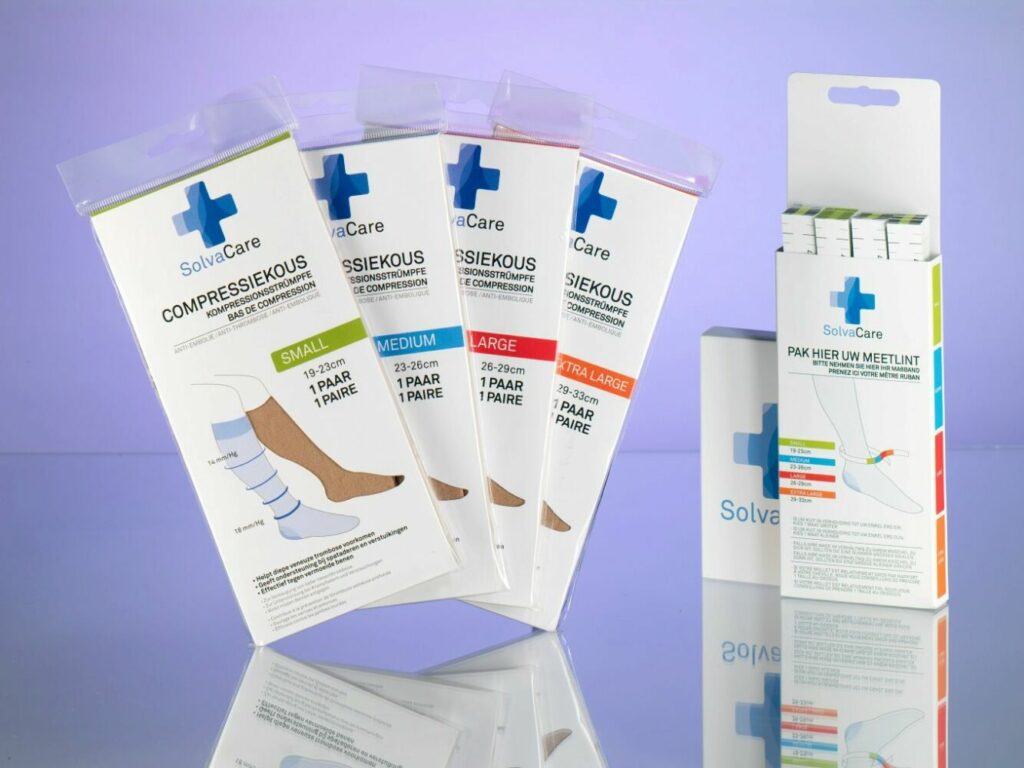Deep vein thrombosis
The blood contains clotting factors. These ensure that a wound does not continue to bleed, but develops a crust and heals quickly. Thrombosis is caused by a clot remaining in the veins.
Such a clot can occur, for example after an injury, due to hereditary predisposition, but also as a result of poor circulation.
Visit our online store!
Free shipping throughout the Netherlands.
Your compression stockings delivered in two working days!
Clogging
Clots stuck in the blood vessels can have adverse effects on the body. A clot can remain in the veins and disrupt the flow of blood. This is called thrombosis. Thrombosis occurs especially in the lower legs. This is because the blood vessels in our venous system have valves to prevent the blood from flowing back into our legs. The clots get stuck behind these valves and block the circulation. Even worse is when a built-up clot loosens and is transported through the blood circulation to the lungs. This is called a pulmonary embolism, and it can be life-threatening.
Causes
Thrombosis can have several causes. In some cases, there is a congenital abnormality in the blood coagulation system. A serious illness, surgery or poor circulation due to lack of movement can also result in thrombosis. Thrombosis is more common in obesity, after pregnancy and in old age.
Complaints
In cases of thrombosis, the blood does not flow out of the leg properly. The leg feels warm and swollen and sometimes turns purple. The skin is tight and shiny and the veins underneath the skin are visible. Walking can be very painful. The leg can also retain fluid.
Solution
SolvaCare compression stockings stimulate a good blood flow in the leg and therefore help to prevent deep vein thrombosis (DVT).
Tips
The following tips ensure healthy veins and help with tired legs, restless legs, heavy legs and swollen ankles.
- Move enough, at least half an hour a day.
- Mind your weight, obesity puts a strain on the blood circulation.
- Stop smoking and drink alcohol in moderation.
- Do not wear high heels or clothes that are too tight.
- Massage your legs every day (from bottom upwards).
- Regularly give your legs an alternating shower (first warm then cold, also from bottom upwards).
- Raise your legs a little higher than your heart every day. You can do this by putting a pillow underneath your legs when lying on the couch or in bed. But you can also do it actively, by throwing your legs in the air and supporting your back with your arms while lying on the ground.

